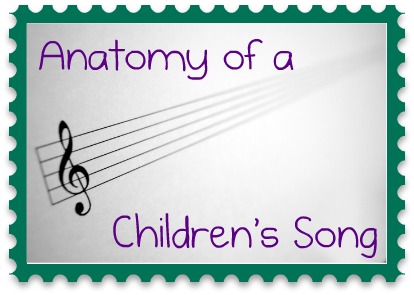 If you have ever sat in on one of my Music Therapy sessions or Early Childhood music classes, you know that I love a good children’s song. You may also have been present to hear an “on the spot” creation. Sometimes, the families and educators and therapists in my sessions have been shocked when I tell them “I just made that up”, quickly followed by, “we need to record that so we don’t forget it”. I have even been known to call my answering machine and record there so I have it waiting for me at home.
If you have ever sat in on one of my Music Therapy sessions or Early Childhood music classes, you know that I love a good children’s song. You may also have been present to hear an “on the spot” creation. Sometimes, the families and educators and therapists in my sessions have been shocked when I tell them “I just made that up”, quickly followed by, “we need to record that so we don’t forget it”. I have even been known to call my answering machine and record there so I have it waiting for me at home.
So how is it that I can make up songs on the spot?
A) My training.
I have been blessed with some great training when it comes to recognizing needs of individuals therapeutically and educationally and have been learning music theory and simple improvisation for several years.
B) Children’s Songs have a formula (Or At least, I think they should)
Here is my analysis of the anatomy of a successful children’s song when used in the therapeutic or educational setting.
*Note: This is strictly my thoughts and what has worked for me and my clients. It may be different for others.
Simple Melodies:
The melody of a song should be so simple that parents and educators can walk away from the session and immediately use it at home. Melodies should contain small intervals and hover around “DO”. The best melodies for my super itty-bittys (0-2) move in a step-wise motion.
Repetition:
Kids need to repeat EVERYTHING! My daughter, for example, will change her baby’s diaper several thousand times before being bored with it. The same should go for the song. A repeated melody, repeated lyrics. This provides something that children can pick up on quickly, thus causing more frequent successes.
Simple Lyrics:
Don’t use large words for children. Simple, Simple, Simple. Don’t use different words that mean the same thing (unless of course vocabulary is your goal). For a two-year old, the dog does not frolic, the dog runs. AND don’t use too many words. It is hard for young children to grasp a concept when so many words are involved.
Directives:
Tell the child exactly what to do in the song. For example, the most requested song in my repertoire is what the teachers have dubbed the “Up and Down Color Song”. Basically, when children have an instrument, most of the time colored, we call a color, the kids jump up and down, spin around, and then they are asked to “put it in the bag and sit back down”. It tells the child EXACTLY what to do so there is no confusion.
Silly Sounds:
What child does not love silly sounds. The most silly of all sounds is “ACHOO!”, go over and see Jerry for an example. Any time you can put a silly sound in a song, you will have instant attention and reaction from a child. It is great! Try it.
Length:
Songs for children, especially that birth to five range, should not be long. Short and Sweet is the way to go. Most of my current songs are MAYBE three short verses and choruses (and that is pushing it).
Have I missed something? What is needed for YOUR songs to be successful?

Loved your suggestions. I often create songs around the “So-Me-La” pitches as they seem to be easy for little ones and work well with pentatonic accompaniment (Boomwhackers, tone bars, etc.).
Absolutely JoAnn! Easy solfege for parents to grasp too! Thanks for reading and commenting!
This is great! I can see how all these !ips would work for songs for children. Thanks for spelling it out!
Thanks Rachelle!
Wonderful information….particularly loved the idea about ‘silly sounds’. I know my groups will love that !! Please keep sharing with us when you can.
Audrey : )
Thanks Audrey! I would love to hear what silly sounds your groups put into song 🙂
Just started up on twitter again, trying to follow music therapists to learn more information! Thank you!
Thanks so much for stopping by, Miranda! Please let me know if there is any further information I could help you find.